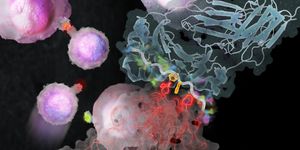Engineers Use Live Tissue to Biohack 3D Structures
It seems that as complex as biological structures are, they can be recreated using only simple instructions, reports new work in Developmental Cell. Bioengineers were able to pattern mechanically active mouse and human cells onto layers of thin, extracellular matrix fibers. With this technique, they could create bowls, ripples, and coils from living tissue. The cells just folded themselves in predictable ways as they acted in concert within a web of the fibers, to mimic the process of natural development.
"Development is starting to become a canvas for engineering, and by breaking the complexity of development down into simpler engineering principles, scientists are beginning to better understand, and ultimately control, the fundamental biology," explained senior author Zev Gartner, part of the Center for Cellular Construction at the University of California, San Francisco. "In this case, the intrinsic ability of mechanically active cells to promote changes in tissue shape is a fantastic chassis for building complex and functional synthetic tissues."
3D printing and micro molds are already used to make three-dimensional shapes for use in tissue engineering laboratories. Often, however, critical structural features that are present in live tissue is missing from these programmed tissues. Gartner’s team utilized a cell patterning technology that works precisely in three dimensions, called DPAC for DNA-programmed assembly of cells. That allowed them to create the foundation, a template a tissue that folded itself into complex structures, replicating how living tissue is assembled hierarchically during the development of organisms.
"We're beginning to see that it's possible to break down natural developmental processes into engineering principles that we can then repurpose to build and understand tissues," noted first author Alex Hughes, a postdoctoral fellow at UCSF. "It's a totally new angle in tissue engineering."
"It was astonishing to me about how well this idea worked and how simply the cells behave," Gartner said. "This idea showed us that when we reveal robust developmental design principles, what we can do with them from an engineering perspective is only limited by our imagination. Alex was able to make living constructs that shape-shifted in ways that were very close to what our simple models predicted."
Next, the team wants to investigate how the developmental program controlling folding can be joined with others that regulate the patterning of tissue, as well as questions about cell differentiation in response to mechanical changes.
Learn more about biohacking in the video above, from Ted Talks.
Sources: AAAS/Eurekalert! Via Cell Press, Developmental Cell











